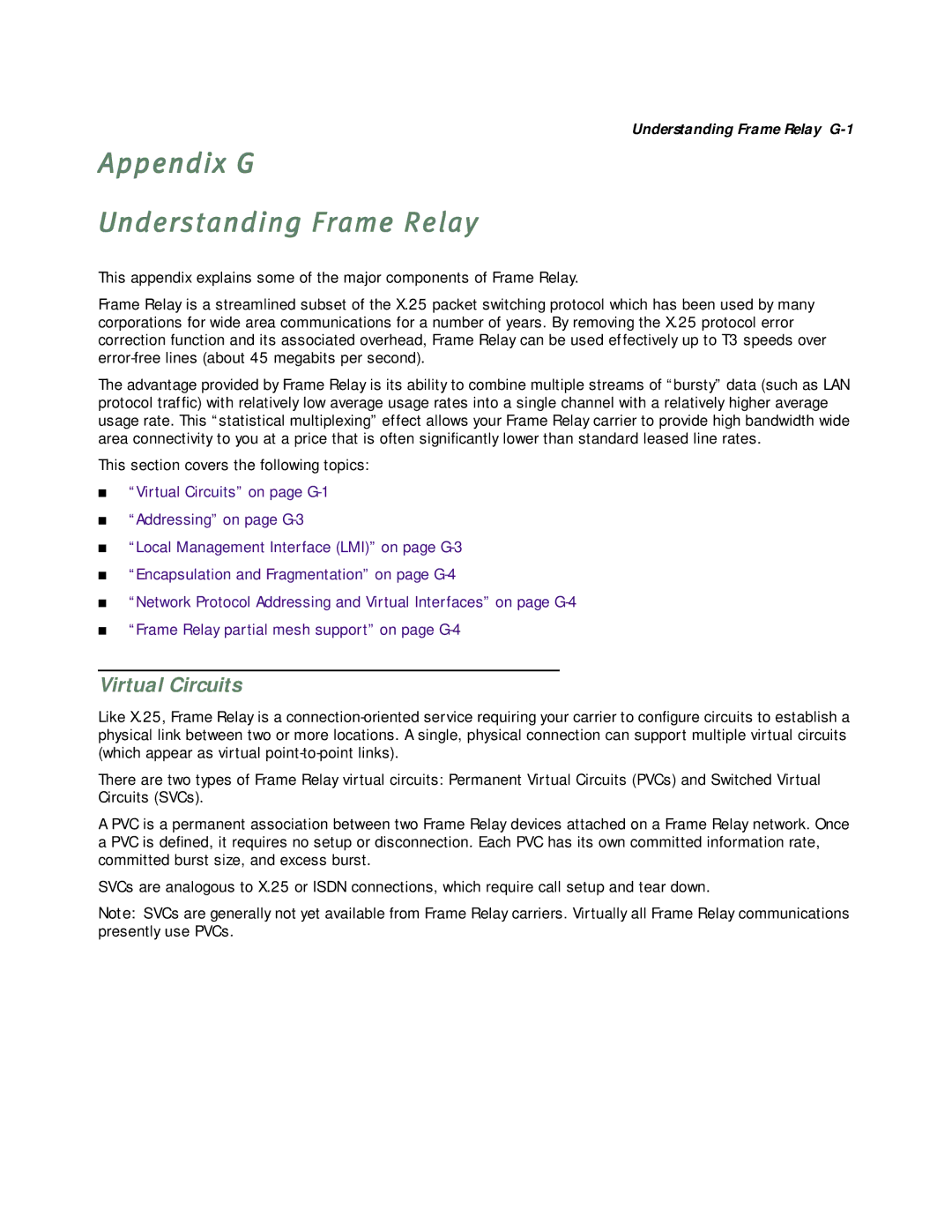Understanding Frame Relay G-1
Appendix G
Understanding Frame Relay
This appendix explains some of the major components of Frame Relay.
Frame Relay is a streamlined subset of the X.25 packet switching protocol which has been used by many corporations for wide area communications for a number of years. By removing the X.25 protocol error correction function and its associated overhead, Frame Relay can be used effectively up to T3 speeds over
The advantage provided by Frame Relay is its ability to combine multiple streams of “bursty” data (such as LAN protocol traffic) with relatively low average usage rates into a single channel with a relatively higher average usage rate. This “statistical multiplexing” effect allows your Frame Relay carrier to provide high bandwidth wide area connectivity to you at a price that is often significantly lower than standard leased line rates.
This section covers the following topics:
■“Virtual Circuits” on page
■“Addressing” on page
■“Local Management Interface (LMI)” on page
■“Encapsulation and Fragmentation” on page
■“Network Protocol Addressing and Virtual Interfaces” on page
■“Frame Relay partial mesh support” on page
Virtual Circuits
Like X.25, Frame Relay is a
There are two types of Frame Relay virtual circuits: Permanent Virtual Circuits (PVCs) and Switched Virtual Circuits (SVCs).
A PVC is a permanent association between two Frame Relay devices attached on a Frame Relay network. Once a PVC is defined, it requires no setup or disconnection. Each PVC has its own committed information rate, committed burst size, and excess burst.
SVCs are analogous to X.25 or ISDN connections, which require call setup and tear down.
Note: SVCs are generally not yet available from Frame Relay carriers. Virtually all Frame Relay communications presently use PVCs.
